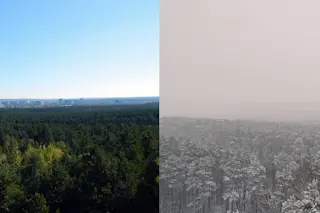Historic snow and a heat wave? That’s what a downright loopy jet stream pattern is bringing to large parts of the United States.
Parts of the Northern Rockies are bracing for what the National Weather Service in Missoula, MT is describing as an “historic winter storm this weekend,” with up to five feet of snow forecast. (Click on the graphic above for details.)
Although this part of the United States is no stranger to early autumn snow, it’s not usually measured in feet.
Meanwhile, parts of the U.S. East Coast are continuing to experience temperatures well above normal for this time of year — and conditions are forecast to heat up even more, potentially to record-high levels next week.
With a stubborn “heat dome” parked overhead, the Southeast has already been enduring one of its hottest Septembers on record. And the strength of the dome is forecast to intensify next ...














